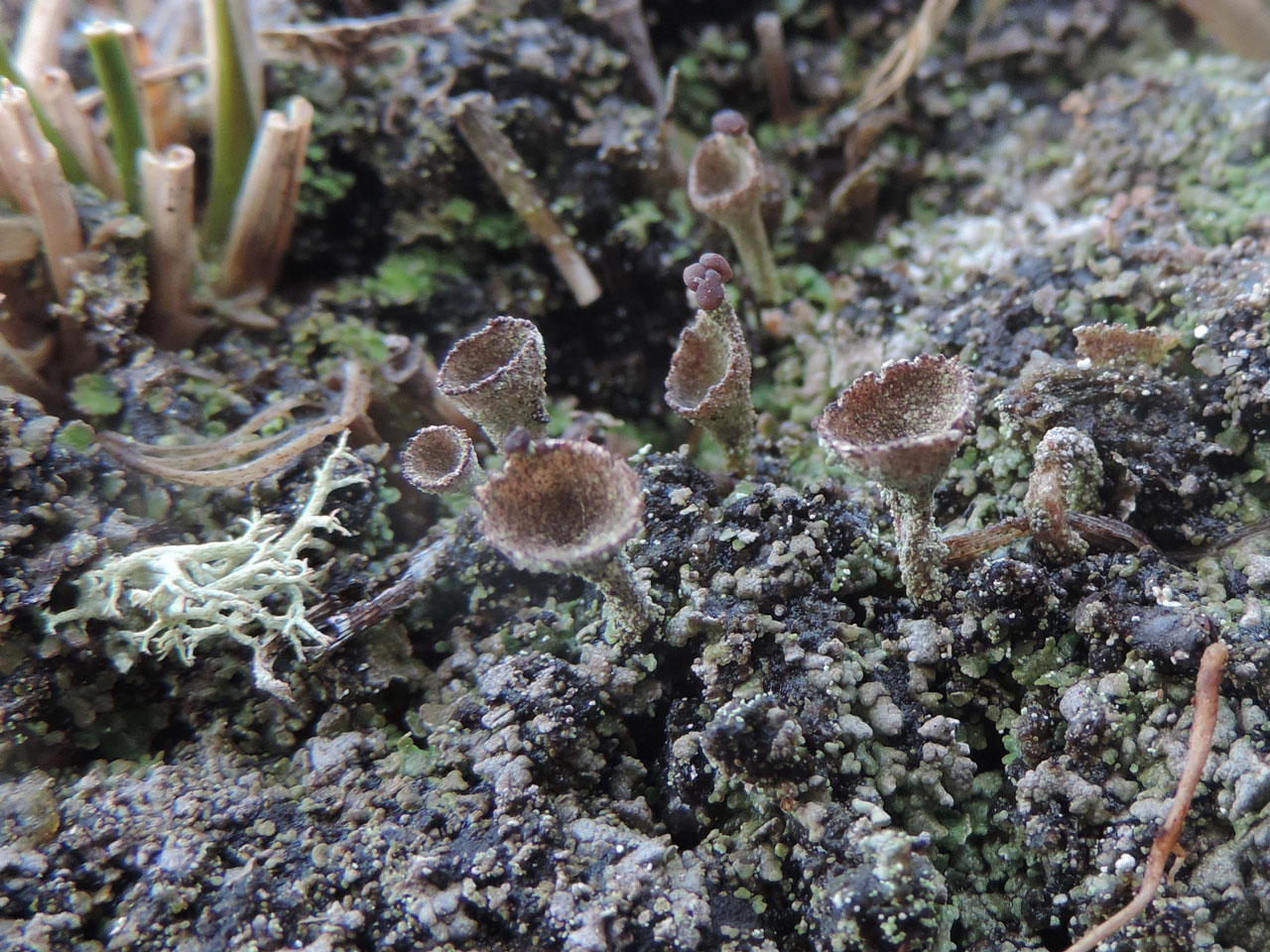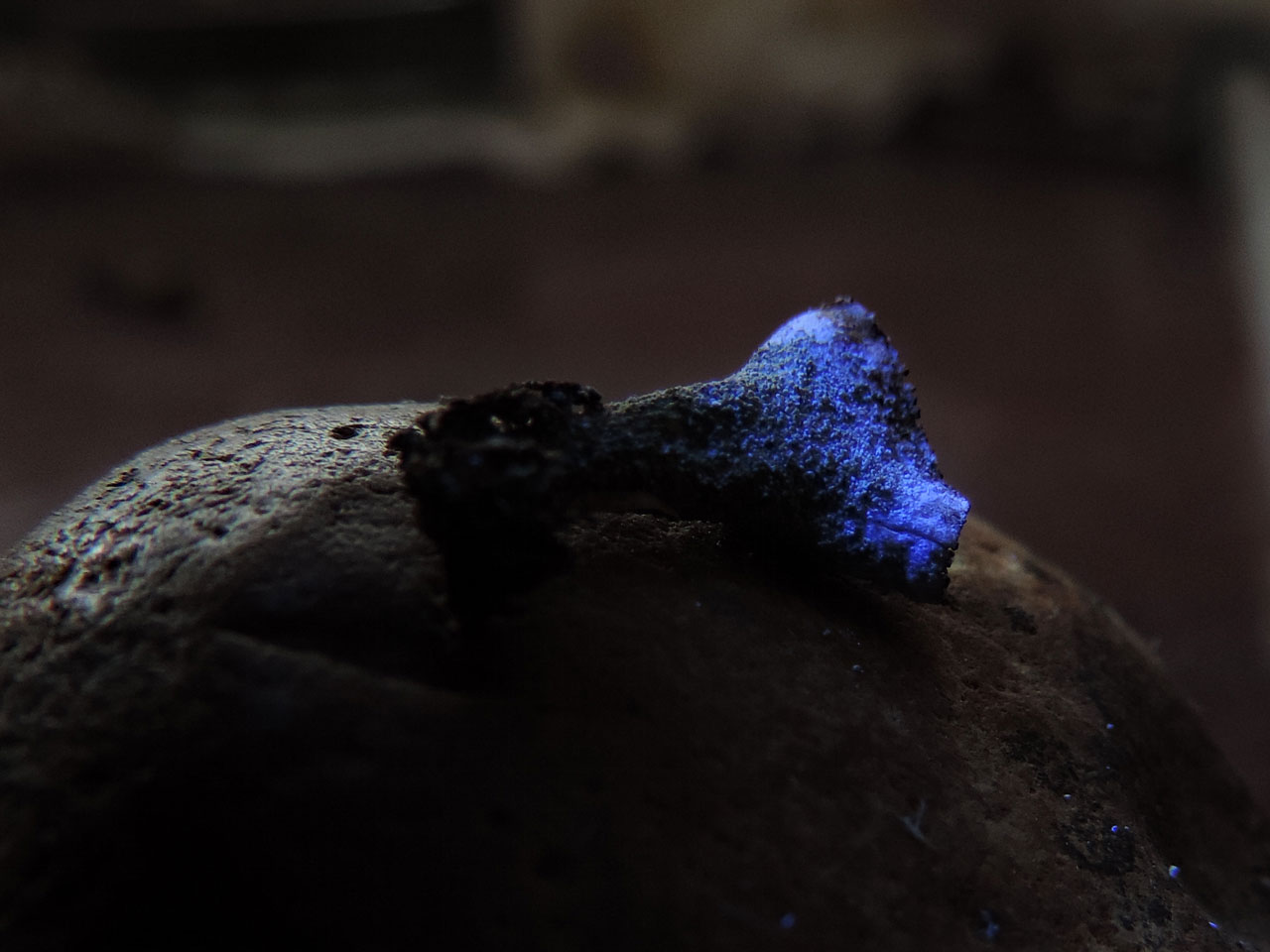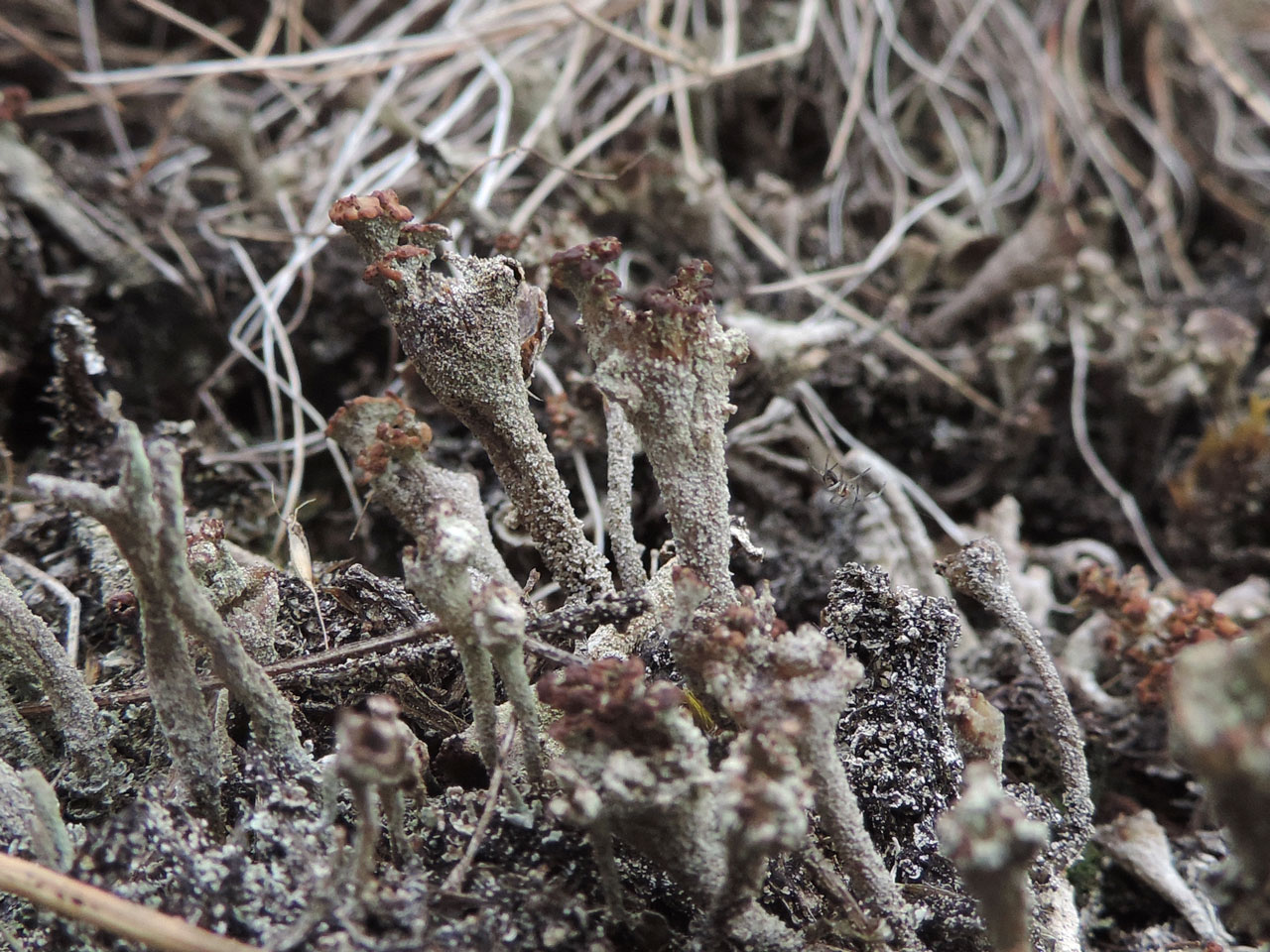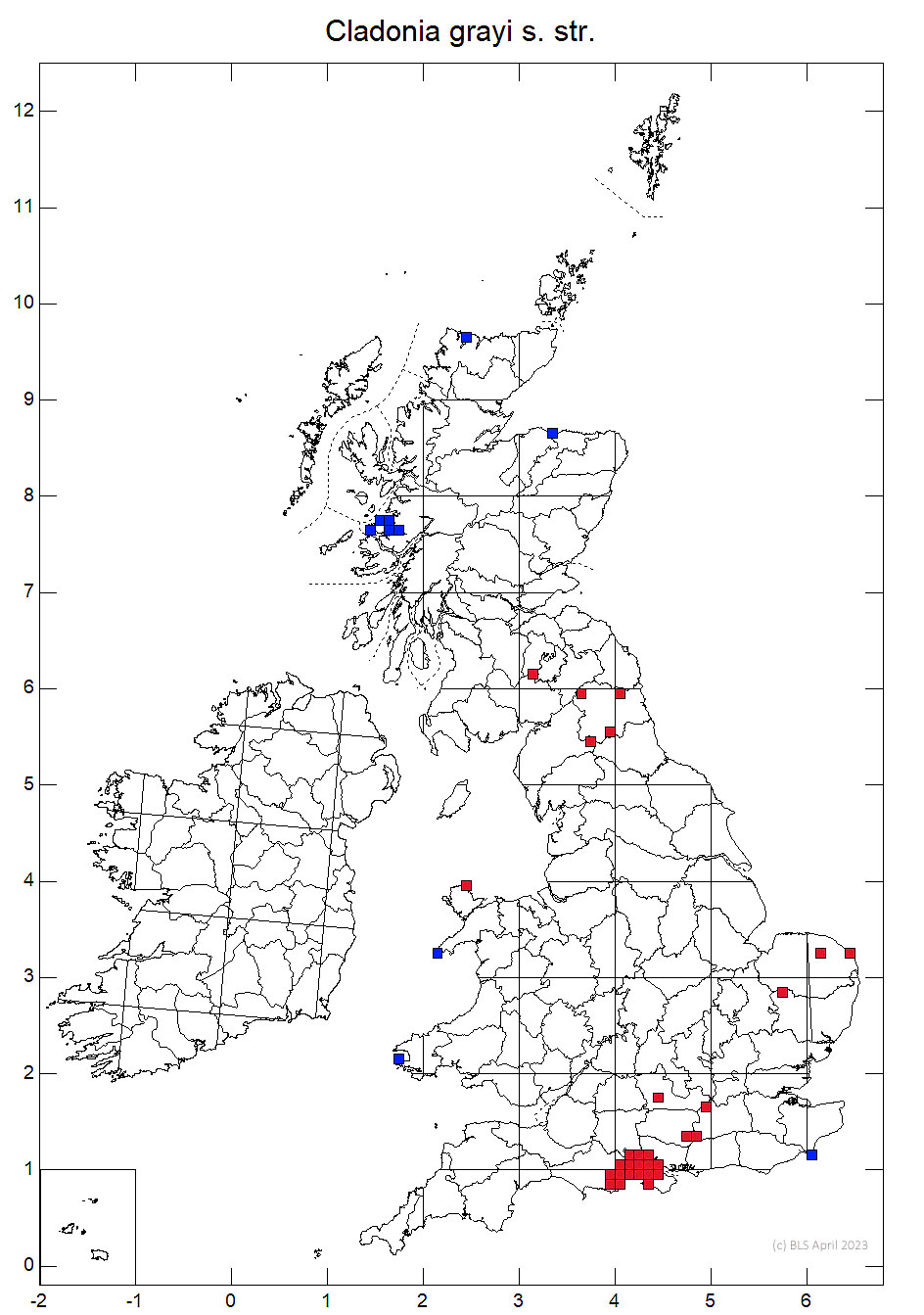Cladonia grayi s. str.
A Pixie Cup within the difficult Cladonia grayi group, and included in the Cladonia chlorophaea s. lat. morphocomplex. The Cladonia grayi group can be distinguished from Cladonia chlorophaea s. str. by the browner colours, the exposed medulla pinkish brown and the presence of K and C reactions and UV fluorescence. The Cladonia grayi is more distinctive than other Cladonia grayi group species due to bright UV+ mauve-white reaction (grayanic acid), which separates from all other similar species.
Podetia to 2 (–3) cm tall, greenish or pale grey and usually with a distinct brown tinge, sometimes blackened at the base, usually unbranched, the stalk ± corticate, verrucose-areolate, often squamulose; cup regular, to 7 mm diam., rarely proliferating, sorediate, the soredia easily eroding and mixed with microsquamules. Basal squamules inconspicuous, soon evanescent. Apothecia rare, ± dark brown, on stalks developing from the scyphus margin. Thallus C–, K–, KC–, Pd± red, UV+ mauve-white (grayanic and ± fumarprotocetraric acids).
Part of a frequently recognised morphocomplex that traditionally includes Cladonia chlorophaea s. str., but that species is phylogenetically distinct and may be separable in morphological terms; the podetia in C. grayi s. lat. [BLS 2810] are browner and more completely corticate and granulose, rarely with large soredia. It is included in a subclade separate from that containing C. chlorophaea within clade Cladonia subclade Graciles (Stenroos et al. 2019), and seems to be polyphyletic.
Species within the Cladonia grayi aggregate include C. asahinae, C. cryptochlorophaea, C. merochlorophaea and C. novochlorophaea (see table under C. chlorophaea s. lat.). They are difficult to determine using morphology, and are arguably conspecific. TLC is mostly recommended to confirm identification. The presence of grayanic acid (leading to the distinctive bright UV+ mauve-white reaction) is considered to be diagnostic for C. grayi s. str., with some populations also producing fumarprotocetraric acid (Pd+ red).
On strongly acid peat and sandy soils on banks, pathsides etc. in heathland and moorland, very rarely on acid bark.

Scattered, certainly under-recorded but always infrequent. Apparently absent from Ireland.
Not evaluated, but given its distinctive fluorescence it has proved to be rather scarce in recent systematic surveys and could be a Notable species and is likely threatened by habitat loss in at least in the lowlands.
Pino-Bodas, R., Sanderson, N., Cannon, P., Aptroot, A., Coppins, B., Orange, A. & Simkin, J. (2021). Lecanorales: Cladoniaceae, including the genera Cladonia, Pilophorus and Pycnothelia. Revisions of British and Irish Lichens19: 1-45. Link
Text by Neil A Sanderson, based Pino-Bodas et al (2021)



